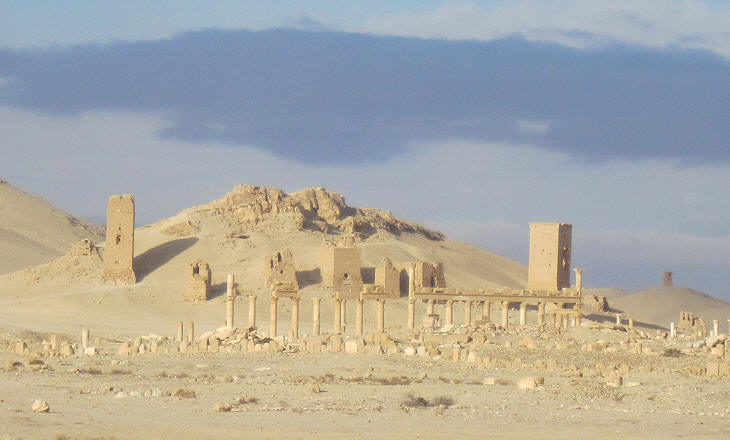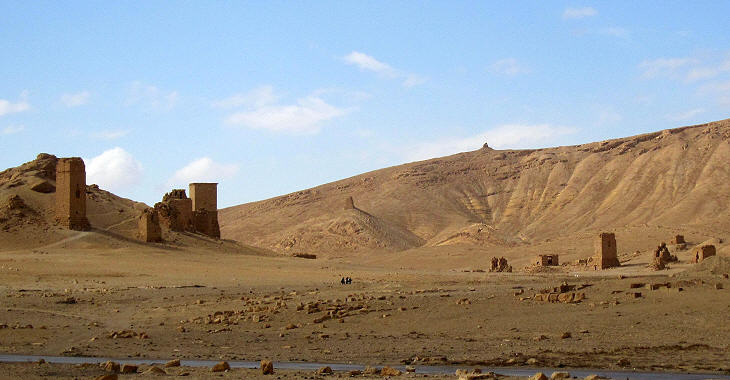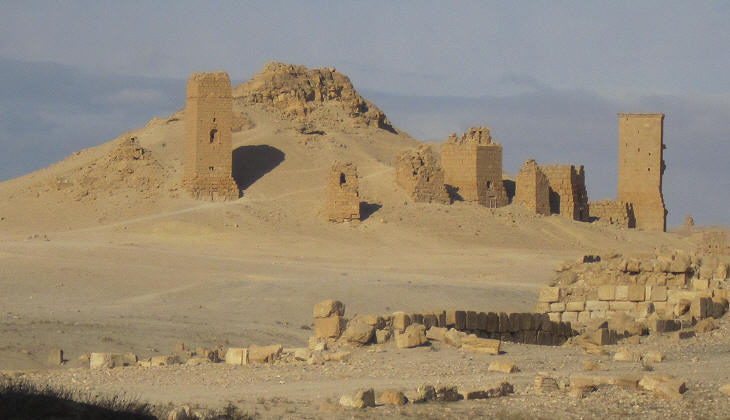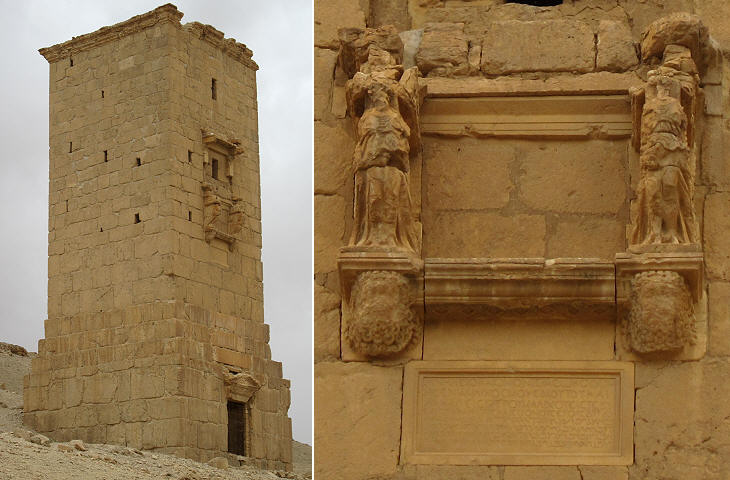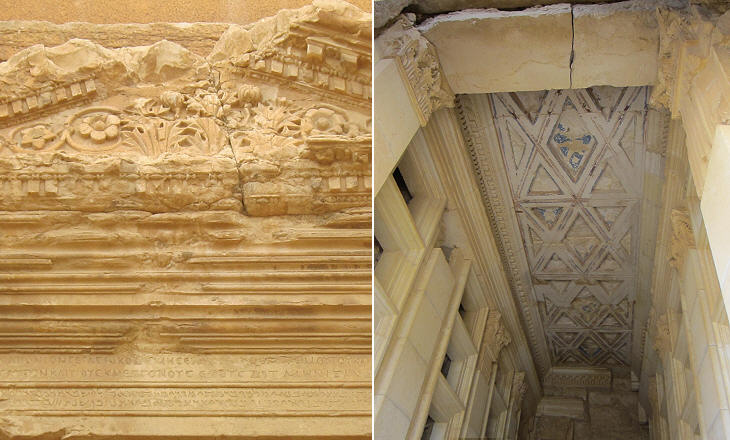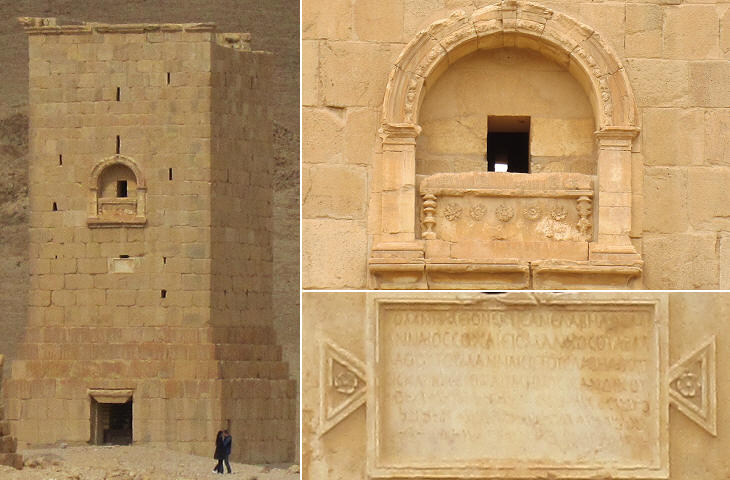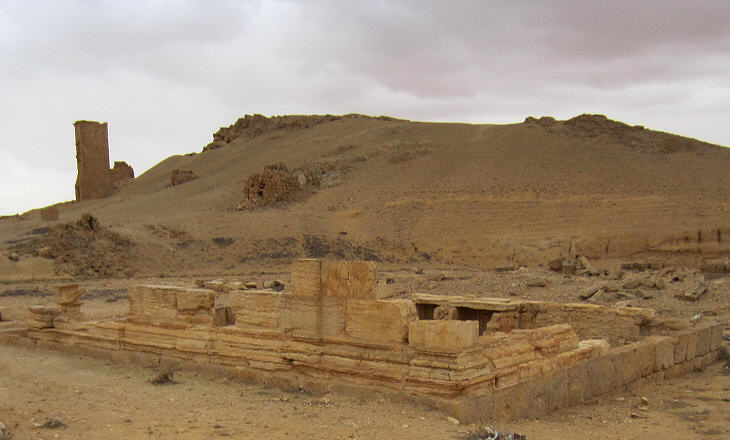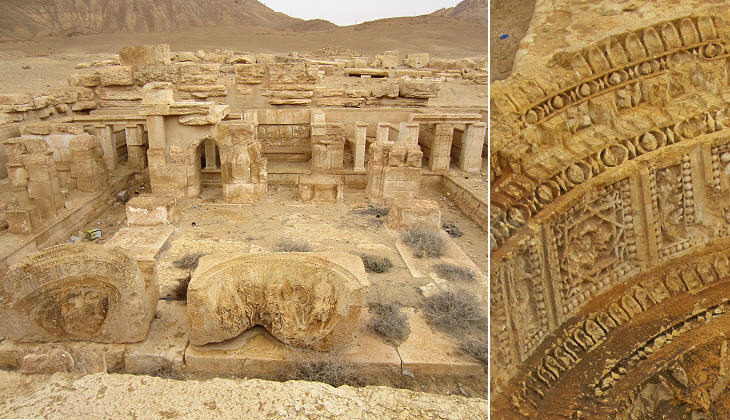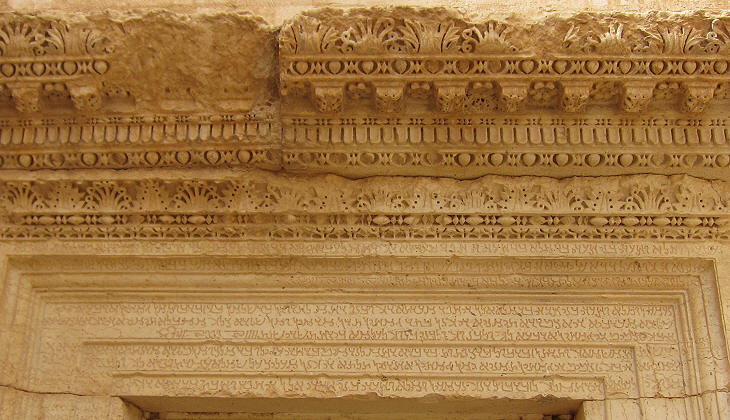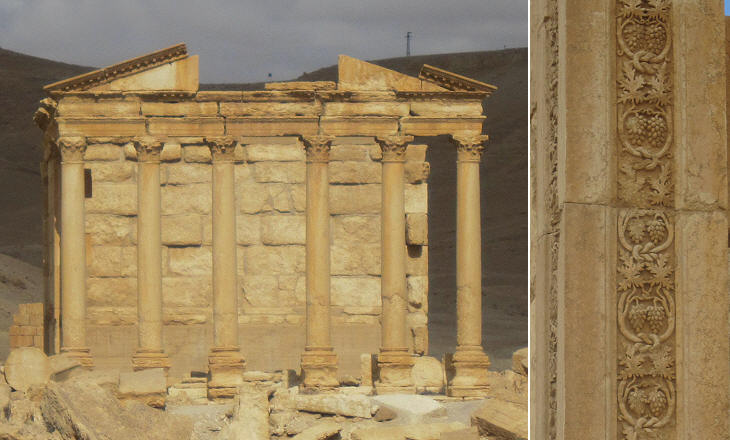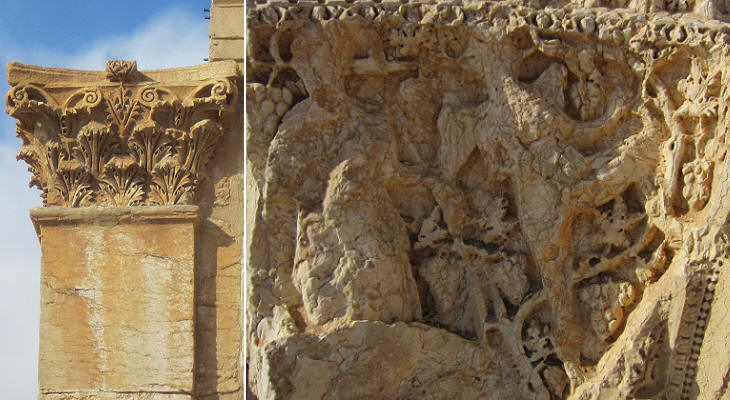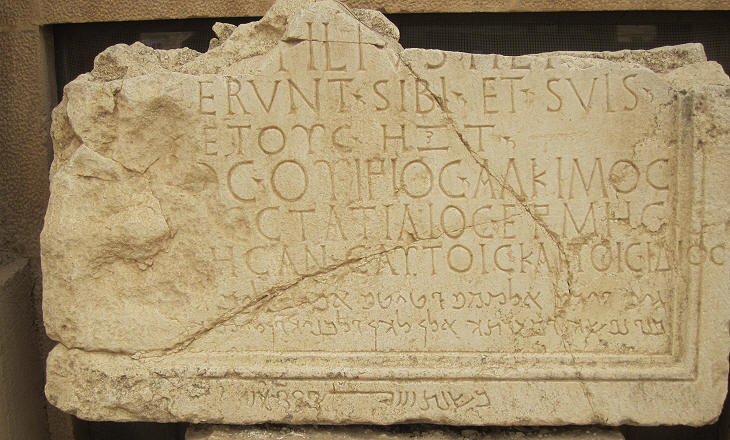  What's New! Detailed Sitemap All images © by Roberto Piperno, owner of the domain. Write to romapip@quipo.it. Text edited by Rosamie Moore. Page revised in June 2015. |
 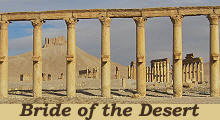 - Palmyra - Funerary Monuments - Palmyra - Funerary Monuments
If you came to this page directly, you might wish to read an introductory page first.
Palmyra retains a wide array of tombs and recent archaeological findings indicate that research in this field is far from being complete. Tower tombs are a particular feature of Palmyra which can rarely be seen elsewhere in the Greco-Roman world; a series of them are in sight of the city and they immediately attract the attention of the viewer.
With reference to the Egyptian Valley of the Kings, the Royal Necropolis of Ancient Thebes, an area located to the south-west of Palmyra is called Valley of the Tombs; the tombs were built on high ground at the sides of the road linking Palmyra to Emesa (today's Homs) and Damascus. It is definitely a very evocative landscape, if only the thoughts of the passer-by were not interrupted by sellers of fake antiques and by women dressed in assumed typical Bedouin clothes posing (for a fee) for tourist cameras.
The construction of tower tombs on high ground was probably due to the belief that high places were sacred as they were close to the sky; clearly the choice of this type of tomb included also a more mundane objective; because they were very visible they called for respect and admiration of the families who built it.
Archaeologists have identified different phases of the techniques which were utilized for the construction of tower tombs; the Iamblichus Tower (it is named after its founder) was built in 83 AD and it is a well preserved example of the last and most elaborate type of tower which had a neat and proportioned design and a series of decorative elements.
The concept of family at Palmyra was that of a group of interrelated families, similar to a Scottish clan or a Roman gens; this explains why some towers have more than a hundred loculi; the sarcophagus of the founder was placed at the entrance; he was portrayed as if he were attending a banquet and greeting those who entered the tomb. From inscriptions archaeologists have learnt that it was customary for the wealthiest inhabitants of Palmyra to bequeath money to priests in order that periodical ceremonies were held in their memory, a practice pretty similar to that of offering masses for the souls in Purgatory.
The Elahbel Tower was built in 103 AD; it can be regarded as the finest example of this type of building; its niche shows the importance of funerary banquets in the cult of the dead at Palmyra. It is not entirely understood why tower tombs which had become so elaborate were abandoned in the first half of the IInd century in favour of different types of tombs.
The move to underground tombs in the IInd century was perhaps motivated by economic aspects in the sense that it was less expensive to obtain a large number of loculi by excavating a rock than by building a tower; another aspect was perhaps the increased Hellenization of the society of Palmyra; the Greeks believed that the abode of the dead was in the underworld. Archaeologists have found towers built above a hypogeum, which probably marked a transition between the two types of tombs.
Hypogea were often decorated in a lavish manner which reflects the so called Roman Baroque style which became fashionable at the time of Emperor Hadrian and lasted until the first decades of the following century. The Hypogeum of Yarhai in the Valley of Tombs has been reconstructed in the Museum of Damascus (external link).
The most famous hypogeum of Palmyra is located in the so called southern necropolis, which actually was most likely part of one large area of tombs which included also the Valley of the Tombs and a series of tombs which were included inside the walls of Palmyra at the time of Emperor Diocletian. The Hypogeum is named after the three brothers who built it; it contains many interesting frescoes - external link.
Tombs having the shape of a house or of a temple started to be built in 143 AD and they represent in chronological order the third type of tombs of Palmyra; they were common in many parts of the Roman Empire and in particular in the Anatolian peninsula (you may wish to see those at Imbriogon). The funerary temple at the end of the western end of the Colonnade is the most imposing one; it was built in the early IIIrd century and the detail of its decoration shown above can also be seen in buildings at Sabratha (Lybia) of the same period.
A series of tombs near the Funerary Temple which were incorporated into the walls built by Emperor Diocletian are currently (March 2011) being excavated; sarcophagi and decorative elements are piled up waiting to be cleaned and catalogued.
On a Friday (when the site was empty) it was possible to take a photo of the sarcophagi which are in the process of being unearthed; the sarcophagus on the back wall shows parents with their children attending a funerary banquet; while sarcophagi portraying the dead on the lid are common to many ancient cultures, at Palmyra the dead was often portrayed on the front side of the sarcophagus. In some tombs sarcophagi with banqueters in high relief were disposed so that they formed the image of a dining room.
This tomb was built in 236; a relief on a sarcophagus found in this tomb portrays a merchant between a camel (only the legs are visible) and a sea-going ship in a sort of summary of the maritime and overland aspects of trade in which the deceased had been involved. This temple/house tomb was referred to as Qasr el Hayyé until the lintel of the entrance was found with the very Latinized name of the owner.
An amazing aspect of Palmyra is the fact that the stones used for most of its monuments appear to have stood the ravages of time to a very different degree although they were in the same location; this is usually attributed to corrasion (wind erosion) which impacted more or less heavily depending on the exposure of the stones to the prevailing winds.
In the 1990s in the Valley of the Tombs an interesting trilingual funerary inscription was found; the entire Latin text has been reconstructed based on those in Greek and Aramaic: (C. Virius Alcimus et)/(T. Stat)ILIUS HER(mes)/(fec)ERUNT SIBI ET SUIS. It refers to a tomb built by two friends for them and their descendants and it is dated 56 AD; by comparing this inscription with others it appears that the two persons were publicans, i.e. officers in charge of collecting taxes.
Go to: Introduction Temple of Bel Colonnade Other Monuments Map of Syria with all the locations covered in this website  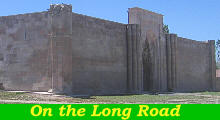 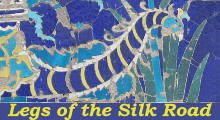 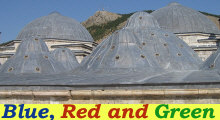
|
